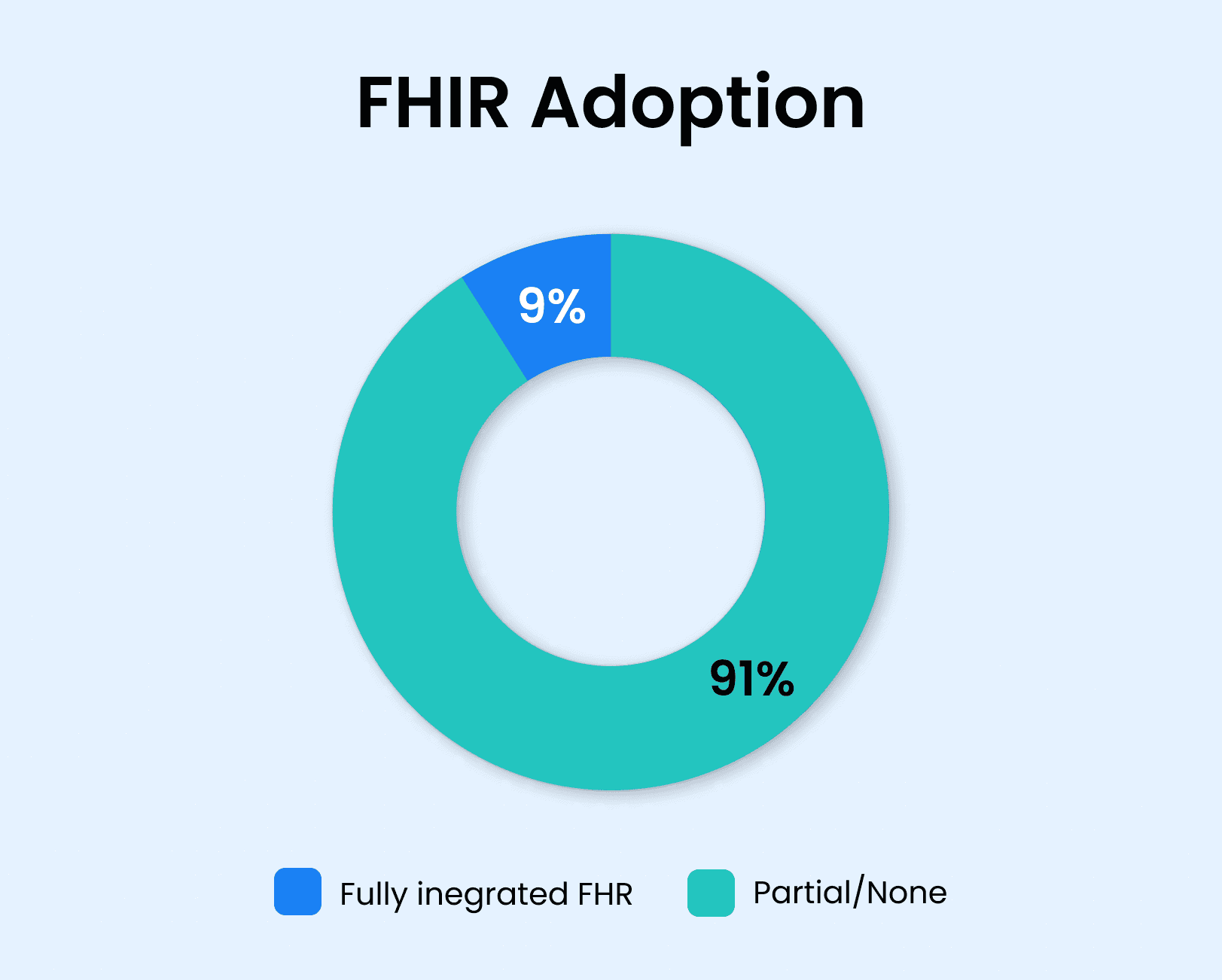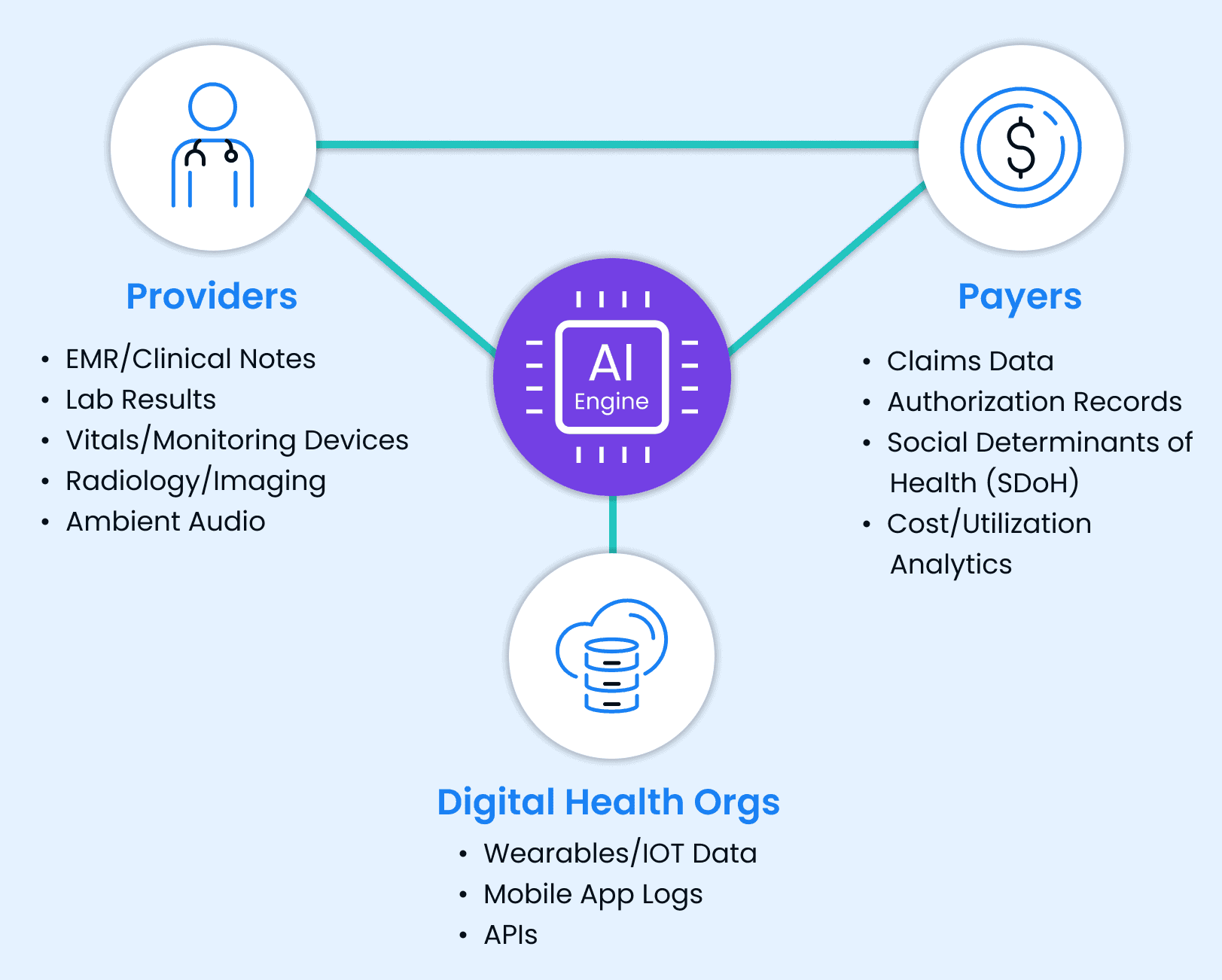Artificial intelligence has taken center stage in healthcare strategy, promising everything from operational efficiencies to clinical breakthroughs. But as the industry moves beyond experimentation into enterprise-scale deployment, one truth is becoming clear: interoperability is the unsung hero behind successful AI.
Health systems and tech innovators are no longer asking “Should we use AI?”—they’re asking “Why isn’t AI delivering the results we expected?” And in most cases, the barrier isn’t the model—it’s the data.
Why AI Is Only as Smart as Your Interop Layer
AI is poised to transform healthcare—reducing physician burnout, improving care coordination, and lowering operational costs. But without clean, complete, and connected data, even the best AI models fall short. In 2025, the spotlight has shifted from AI hype to AI reality—and the first roadblock many organizations face isn’t model performance; it’s their data. As health systems and health tech companies pursue ambient documentation, revenue cycle automation, and advanced analytics, they’re coming to a key realization: AI is only as effective as the interoperability strategy supporting it.
Most organizations today still operate in fragmented data environments, constrained by EHR vendor limitations and complex privacy challenges that stall innovation. In fact, only 9% of U.S. health systems report having a fully integrated FHIR-based ecosystem. This interoperability bottleneck isn’t just a technical issue—it’s a strategic barrier. Here’s how it’s shaping the future of AI in healthcare.
“Only 9% of U.S. health systems report having a fully integrated FHIR-based ecosystem.”
HIMSS Interoperability Report 2024-2025
Trend 1: Ambient AI Is Forcing a Data Quality Reckoning

Ambient AI tools, such as Abridge, DeepScribe, and Microsoft’s DAX Copilot, are being rapidly adopted to combat clinician burnout and improve documentation. These tools use healthcare-specific language models to capture and structure provider-patient conversations in real time.
However, there’s a caveat: ambient scribes and AI CDI tools are only as powerful as the structured data they can consume and return. To be effective, real-time context, encounter metadata, and billing information must flow seamlessly from EHR and AI models. That level of performance depends on robust interoperability — and just as critically, on clean, matched person data. Without it, voice notes, visit metadata, and billing events risk being misattributed, leading to duplicates, errors, and downstream disruptions. Tools like Rhapsody EMPI with Autopilot automate this process at scale, reducing manual intervention and enabling AI to perform with clinical-grade precision.
Health systems like Geisinger and SimonMed Imaging use EMPI with Autopilot to automatically resolve over 98% of duplicate records—freeing up FTEs and ensuring every AI tool sees the right patient data at the right time.
Takeaway: AI needs structure to function. Interop is what gives ambient AI its clinical and financial utility.
Trend 2: Interoperability Gaps Are Undermining AI ROI

AI-powered tools are gaining traction across the board—from predictive analytics and clinical decision support to coding automation and ambient scribing. Yet many of these initiatives stall or underperform due to fragmented or incomplete data, delaying the time-to-value that customers expect.
Black Book Research and KLAS have consistently flagged poor data integration as one of the top inhibitors of AI success. Payers struggle to combine claims and clinical data. Providers operate in silos, with EHR data disconnected from labs, imaging, and care management tools. The result? Poor model performance, clinician distrust, and ROI that never fully materializes.
Takeaway: Good AI fails without good data—and without fast, efficient access to it. Interoperability accelerates time-to-value by delivering the context AI needs to perform reliably. Person data quality is the linchpin, and Rhapsody EMPI with Autopilot ensures every AI system sees the right patient, every time.
Trend 3: FHIR Is the Future—But It’s Far from Universal

FHIR (Fast Healthcare Interoperability Resources) is the industry standard for exchanging health data in a modern, machine-readable format. It enables real-time APIs, modular data access, and smoother vendor integrations. And it’s foundational for many AI workflows.
But adoption is patchy. While federal rules mandate FHIR support from payers and many providers, full implementation is rare. Only 9% of organizations report fully integrated FHIR ecosystems. Many hybrid models operate with legacy HL7, PDFs, and point-to-point interfaces.
Takeaway: FHIR is a powerful enabler—but most organizations still need help operationalizing it at scale.
Trend 4: Consent and Privacy Complexity Are Stalling Progress
Patients want control. Regulators want compliance. Innovators want speed. These forces are increasingly tense.
A survey by The Sequoia Project showed that 75% of consumers worry about the privacy of their health data outside clinical settings. And while universal data privacy laws and computable consent frameworks remain unsettled, healthcare organizations can’t afford to wait. The reality is that AI and digital health projects often slow down—not only over questions of who can use data, but where and how that data moves.
Organizations need a tool that enforces data residency requirements and applies zero-trust network access principles so that data only moves when, where, and how it’s authorized—without introducing friction or risk.
Takeaway: Progress depends on trust. To move forward, organizations must hardwire privacy and residency protections into their data flows to avoid regulatory delays and build confidence with both patients and partners.
Trend 5: Interop Is the Engine for Multi-Modal, Multi-Stakeholder AI

The next wave of AI is inherently collaborative. It depends on connecting clinical, financial, and operational data across payers, providers, and digital health platforms.
For example:
- Predictive analytics that combine social risk + claims + clinical notes.
- Ambient documentation that feeds clean codes directly into billing.
- Real-time alerts that depend on lab + pharmacy + EMR triggers.
These multi-modal models are only possible when systems can talk to each other in real time, with standardized semantics and trusted governance.
That orchestration starts with accurate identity matching—linking the right data to the right person across payer, provider, and platform silos. EMPI with Autopilot gives organizations the trusted identity data they need to make multimodal AI actionable.
Takeaway: AI won’t thrive in silos. Interoperability makes cross-functional intelligence possible.
Pro Tip: Interoperability is not only about moving data. It is about making sure organizations can rely on that data at scale. In genomics, SOPHiA GENETICS faced the challenge of processing massive datasets, up to 20GB per genome, while connecting with LIS and EHR systems around the world. Manual inputs and fragile scripts were not sustainable. By adopting a robust integration platform like Rhapsody Envoy, they automated ingestion across modalities, normalized data for consistency, and scaled millions of samples globally. The lesson is clear: trust in data requires more than connectivity. It depends on infrastructure that is flexible and resilient enough to handle complexity without slowing innovation.
Conclusion: Your AI Ambition Depends on Your Interoperability Reality
AI can elevate care, reduce costs, and empower clinicians. But only if your data infrastructure is up to the task. Interoperability isn’t a side project—it’s the foundation of modern health IT strategy.
Organizations that modernize their interoperability strategy now—with scalable, automated identity resolution baked in—will lead in AI tomorrow. Rhapsody’s integration platform ensures data moves seamlessly and becomes usable, trustworthy, and AI-ready—with EMPI and Autopilot available to add even greater intelligence and control.
Struggling with fragmented records or duplicate data slowing your AI progress?
Rhapsody EMPI with Autopilot automates identity resolution at scale, reducing manual labor by up to 60% and delivering the clean, connected person data your AI needs to work.
Explore how Autopilot helps you scale smarter with trusted identity data.
